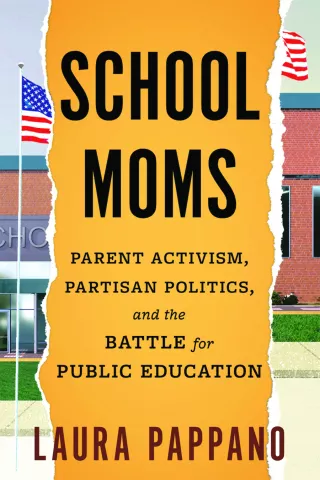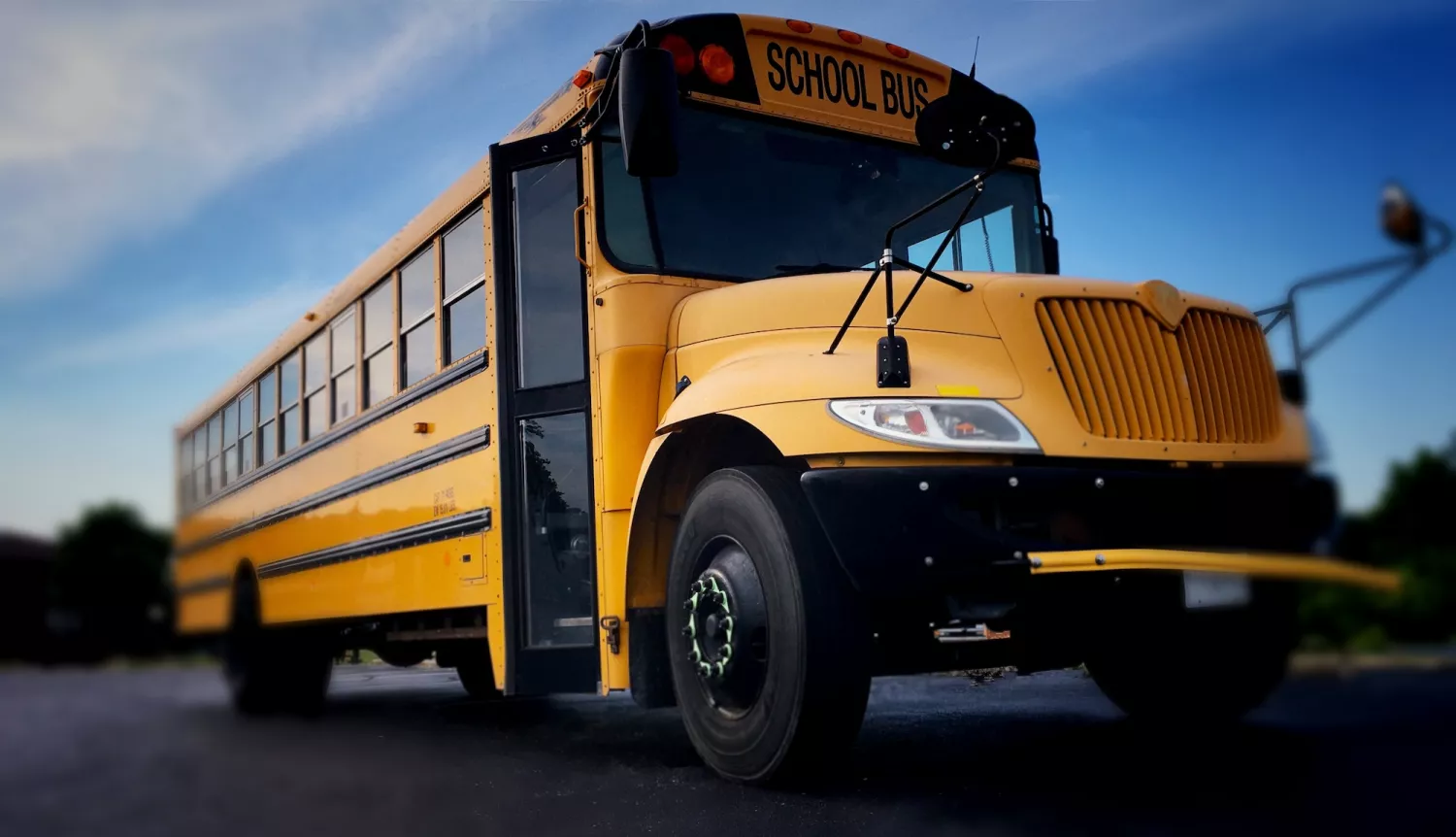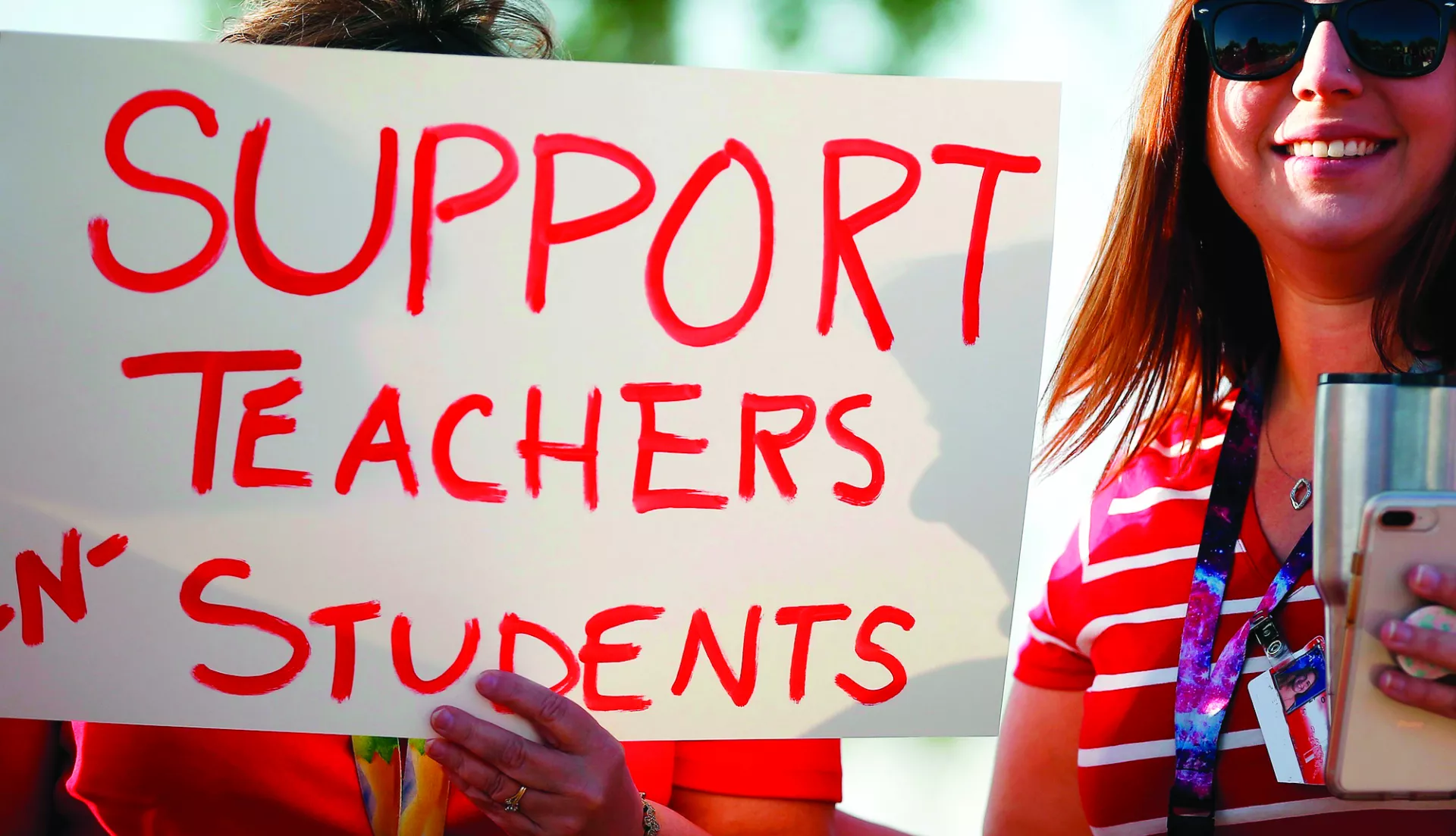New Book: Parents are Mobilizing Against Extremism
Attacks against public schools are nothing new, but today the very idea of public education is being threatened. How did we get here? In her new book, School Moms: Parent Activism, Partisan Politics, and the Battle for Public Education, education journalist Laura Pappano explores the rampant disinformation that’s fueling the so-called “culture wars.” A line has been crossed, she told NEA Today, and we are no longer debating real education ideas and policies.
What compelled you to write this book?

Laura Pappano: As a reporter, I saw things happening that involved schools but were not really about education. There’s a lot of misinformation about inclusion, what kids are being taught, and what books they should read. We’re in a moment right now where these sorts of attacks have gained too much traction.
I’m concerned about a lot of things in our schools, but I am not concerned at all with this nonsense that students are being indoctrinated by critical race theory; that libraries are collecting pornography; or that we are changing the gender of children. Those are untruths that are distracting from the work of figuring out how do we educate everyone who walks in the door.
Why were these attacks so successful, at least initially?
LP: The far right is nationalizing our local experiences and our local conversations around schools. I covered a school board election in Idaho last November. One of the main issues in that race was transgenderism. I was hearing people claim that their candidate was going to keep boys out of girls’ bathrooms.
That was not the problem with schools in that community. This district was entering its second year without a K-6 English language arts curriculum. They have huge budget shortfalls. There were mice running over children’s feet in the classroom, because they didn’t have money to hire a cleaning service for the school. But that’s not what they were talking about in this election.
I do think many people were slow to recognize what was happening. So the far right got a bit of a head start. But we’re seeing much more grassroots action—especially from parents’ groups that are on the ground pushing back.
In the book, you talk to pro-public education parent-activists. Has it been difficult for them to get colleagues and friends to take action?
LP: Well, the support has long been there, but we didn’t necessarily feel we needed to act on it. We tend to take our schools for granted.
We are learning that we need to be involved. We need to pay attention to the school board races. We may even need to run.
New parent groups, like Red, Wine, and Blue, are doing a tremendous, labor-intensive public service.
Moms have done this for years with little recognition. This is one of the reasons I call the book School Moms, because they are the people on the ground.
They may have jobs and other responsibilities, but they are also very involved in public schools and are experts at networking and organizing and motivating.
They’re doing what is necessary to protect the public schools. Parents and educators can be a powerful force when working together.
School Bus Driver Shortage Persists

Like many school staff positions, school bus driver employment remains far below pre-pandemic levels. In September 2023, there were approximately 192,400 bus drivers working in K–12 schools, down 15.1 percent from September 2019, according to the Economic Policy Institute (EPI).
School bus drivers remain a vital part of the education system. Roughly half of school children rely on bus services to get to school. Interrupted services and instability can disrupt learning time and contribute to absenteeism.
EPI reports that further wage increases are necessary in order to recruit new drivers.
In 2021, 7.8 percent of school bus drivers had incomes below the poverty line. That’s greater than the 5.6 percent of private-sector workers and the 3.4 percent of public-sector workers who live in poverty.
“We need to train and prepare our educators to be trauma-informed, but we also have to look at workload, lack of planning time, and lack of respect. We need to look at all the root causes why our profession is asking educators to go beyond their limits.”
—Donna Christy, president, Prince George’s County Educators’ Association, Maryland
Law Helps Breastfeeding Workers
Congress approved new regulations for pumping breast milk in the workplace in December 2022. The Providing Urgent Maternal Protections for Nursing Mothers Act, or the PUMP Act, extends the rights of nursing mothers— including those who are educators—to have time and a private space to pump breast milk at work.
While the legislation passed more than a year ago, implementation is ongoing, and conditions are expected to improve for breastfeeding workers.
The measure closed loopholes in the Fair Labor Standards Act that excluded nearly 9 million women. That included more than 1 million Black women, 976,000 Hispanic women, 825,000 Asian women, 6 million White women, and 185,000 women of other races.
The PUMP Act also allows working women to take legal action and seek monetary remedies if their employer fails to comply. A lack of breastfeeding protections has led to economic harm, sexual harassment, and job insecurity.
To learn more about protections under the PUMP Act, visit
Rural Schools: By the Numbers
Trust in School Librarians Remains High
Across the country, book-banning campaigns attempt to sow mistrust in the dedicated librarians who work in public schools and libraries. But librarians are trusted by families of various backgrounds and income levels and are valued in society.
A new survey, conducted by Book Riot and the EveryLibrary Institute, found that parents and guardians also believe libraries foster safe, engaging environments that support learning and creativity
“Pro-censorship groups do not represent the vast majority of parents or guardians in their beliefs about librarians, reading, education, and civil society,” the report concludes.
92%
92%
90%
96%

